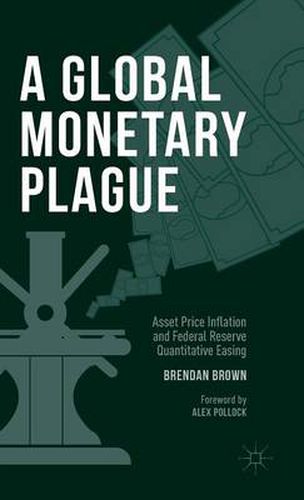Readings Newsletter
Become a Readings Member to make your shopping experience even easier.
Sign in or sign up for free!
You’re not far away from qualifying for FREE standard shipping within Australia
You’ve qualified for FREE standard shipping within Australia
The cart is loading…






This title is printed to order. This book may have been self-published. If so, we cannot guarantee the quality of the content. In the main most books will have gone through the editing process however some may not. We therefore suggest that you be aware of this before ordering this book. If in doubt check either the author or publisher’s details as we are unable to accept any returns unless they are faulty. Please contact us if you have any questions.
The Great Monetary Experiment designed and administered by the Federal Reserve under the Obama Administration unleashed strong irrational forces in global asset markets. The result was a ‘monetary plague’ which has attacked and corrupted the vital signalling function of financial market prices.
This book analyses how quantitative easing caused a sequence of markets to become infected by asset price inflation. It explains how instead of bringing about a quick return to prosperity from the Great Recession, the monetary experiment failed in its basic purpose. Bringing about economic debilitation, major financial speculation, waves of mal-investment in particular areas, and a colossal boom in the private equity industry, the experiment instead produced monetary disorder.
Brendan Brown puts the monetary experiment into a global and historical context, examining in particular Japanese ‘folklore of deflation’ and the Federal Reserve’s first experiment of quantitative easing in the mid-1930s. The author couples analysis from the Austrian school of monetary economics and Chicago monetarism with insights from behavioral finance, and concludes with major proposals for the present and the future, including ideas for monetary reform in the United States, and suggestions for how investors can survive the current market ‘plague’.
$9.00 standard shipping within Australia
FREE standard shipping within Australia for orders over $100.00
Express & International shipping calculated at checkout
This title is printed to order. This book may have been self-published. If so, we cannot guarantee the quality of the content. In the main most books will have gone through the editing process however some may not. We therefore suggest that you be aware of this before ordering this book. If in doubt check either the author or publisher’s details as we are unable to accept any returns unless they are faulty. Please contact us if you have any questions.
The Great Monetary Experiment designed and administered by the Federal Reserve under the Obama Administration unleashed strong irrational forces in global asset markets. The result was a ‘monetary plague’ which has attacked and corrupted the vital signalling function of financial market prices.
This book analyses how quantitative easing caused a sequence of markets to become infected by asset price inflation. It explains how instead of bringing about a quick return to prosperity from the Great Recession, the monetary experiment failed in its basic purpose. Bringing about economic debilitation, major financial speculation, waves of mal-investment in particular areas, and a colossal boom in the private equity industry, the experiment instead produced monetary disorder.
Brendan Brown puts the monetary experiment into a global and historical context, examining in particular Japanese ‘folklore of deflation’ and the Federal Reserve’s first experiment of quantitative easing in the mid-1930s. The author couples analysis from the Austrian school of monetary economics and Chicago monetarism with insights from behavioral finance, and concludes with major proposals for the present and the future, including ideas for monetary reform in the United States, and suggestions for how investors can survive the current market ‘plague’.